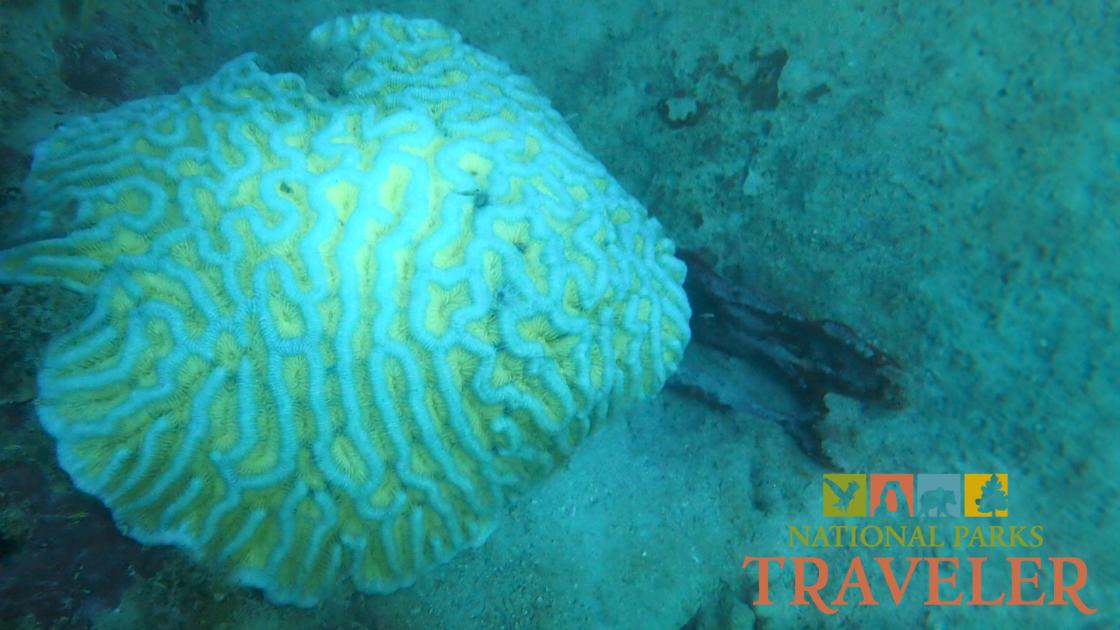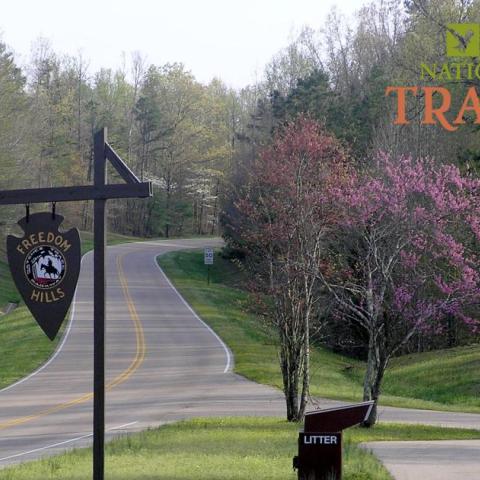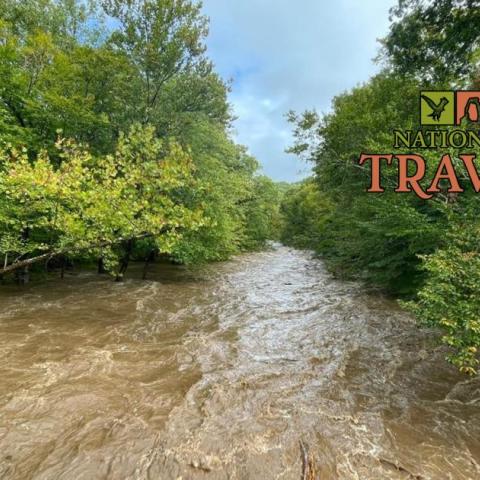Who wouldn’t like to visit a tropical paradise? Virgin Islands National Park in the Caribbean is one such paradise. It resides on the island of St. John, and features beaches sparkling white and lined with palm trees and other tropical vegetation. Those beaches are washed by warm, turquoise waters that provide habitat for sea turtles the size of trunks, colorful fishes like blue tang and parrot fish, and even menacing barracuda.
While the national park might seem idyllic from above water, beneath the surface of the Caribbean Sea, the once vibrant coral reefs have been impacted by a bleaching event caused by abnormally high ocean temperatures compounded with disease, that together could have devastating consequences. Snorkel or scuba dive in the national park’s waters, or those that surround Virgin Islands Coral Reef National Monument, Buck Island Reef National Monument, or Salt River Bay National Historical Park and Ecological Preserve, and in many directions you’ll see a seemingly lifeless seascape.
To better understand what’s going on, we’re joined today by Jeff Miller, a National Park Service fisheries biologist who, before he retired back in 2021, worked with the South Florida Caribbean Inventory and Monitoring Network on developing a coral and fisheries monitoring program.












Add comment